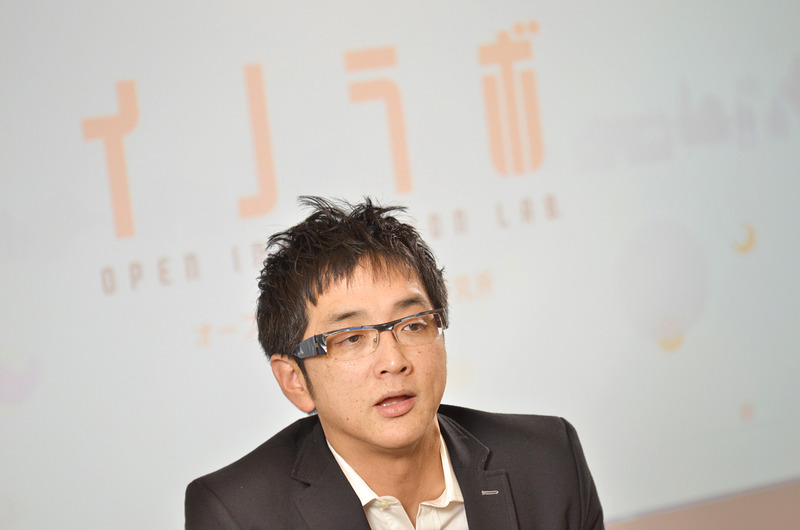What exactly is open innovation?

Nobuhiko Watanabe
You've probably heard the term "open innovation" more often lately. While many know it involves "several companies jointly developing innovative technologies," few truly grasp its details or reality. That's why we asked Nobuhiko Watanabe, Director of the Open Innovation Lab (Inolab) at Dentsu Inc. International Information Services (ISID), to explain the ins and outs of open innovation. We'll cover this topic over three consecutive installments.

The Collaborative Innovation Model Pursued by INNOLAB
――First off, what exactly is open innovation?
Watanabe: "Bringing together technologies and ideas from various organizations to collaborate and create innovative business models" – that's the broad concept of open innovation. While it's called open innovation, its scale and style vary greatly. I believe it can be broadly divided into two main types: "collaborative" and "co-creative."
Collaborative-type involves forming teams with others to seek technologies we lack—essentially a gap-filling project style. Many domestic companies pursue open innovation this way, disclosing their own technology to a certain extent and recruiting partners by asking, "Is there an organization that can fill this gap?" Once an organization possessing the missing technology is found, the project progresses, making development after team formation smoother and more likely to succeed. However, this approach often involves large corporations as hosts, carrying the risk of becoming top-down projects dominated by powerful companies. Furthermore, since it frequently involves peers sharing existing technologies, it struggles to generate truly dramatic, innovation-level effects.
Collaborative co-creation, on the other hand, is a style that has gained prominence recently. It represents a true "co-creation" format where cutting-edge technology is elevated and developed into new services through the power of people with entirely different perspectives. It's not the typical project where engineers simply team up to invent something; it's an approach that combines technologies and advantages at different stages to create new cultures and markets. This collaborative co-creation model is the type of open innovation we want to pursue. Leveraging the Dentsu Group's network and expertise in advertising communication, we aim to bring hidden technologies to the world.
Placing small and medium-sized ventures and freelance creators at the forefront
――When advancing this collaborative open innovation, what do you pay particular attention to?
Watanabe: We consciously strive to make small and medium-sized ventures and freelance creators the protagonists. Large corporations already possess sufficient financial resources, technological capabilities, and patents. They can spearhead as many new open innovation initiatives as they wish, and many of their efforts are already mature. Rather than piggybacking on such entities now, we believe it's more effective to launch projects on equal footing with small and medium-sized ventures and individuals, leveraging the Dentsu Group's unique integrated strengths to foster new co-creation.
Many small and medium-sized ventures and freelance creators possess remarkable technologies. However, due to their small size and relative obscurity, they often struggle to participate in large projects or secure substantial funding. Even when they manage to raise funds and launch a service, it frequently becomes a fleeting topic of conversation, ending as just a single event. By stepping in as facilitators like us, we can help evolve these initiatives into platforms with long-term viability. We feel this also holds significant social value.

Building genuine, trusting relationships and creating an environment where failure is acceptable
――How do you find promising organizations and creators?
Watanabe: In the beginning, I frequented communities where venture capitalists gathered, gathering information through personal connections. I showed up nightly at meetings held in small bars in Shibuya, building relationships, and getting introduced to people who were making waves... If we'd introduced ourselves as "Inolab" or "Dentsu Group" from the start, it would inevitably have turned into a business conversation. Instead, we focused on building personal trust. We met face-to-face to build relationships and sought out people we felt we could create things with.
――Once the organization and people were set, what was the next step?
Watanabe: We started by undertaking small projects with modest investments. Working together within limited funds and timeframes, sweating it out on the project, usually made it clear whether we could move forward. If we judged it "too difficult," we'd cut it off cleanly. Sometimes we'd even backtrack and start over.
For many Japanese companies, open innovation ends the moment they fail once. But truly transformative innovation isn't something you can just whip up easily. One or two failures are par for the course; you can make up for them later. That's why I believe it's crucial to make small investments and create an environment where you can step back and try again.
(Continued in Part 2 )
Was this article helpful?
Newsletter registration is here
We select and publish important news every day
For inquiries about this article
Author

Nobuhiko Watanabe
Dentsu Inc. International Information Services, Inc. (ISID). Director, Open Innovation Research Institute. Left the company in December 2014.